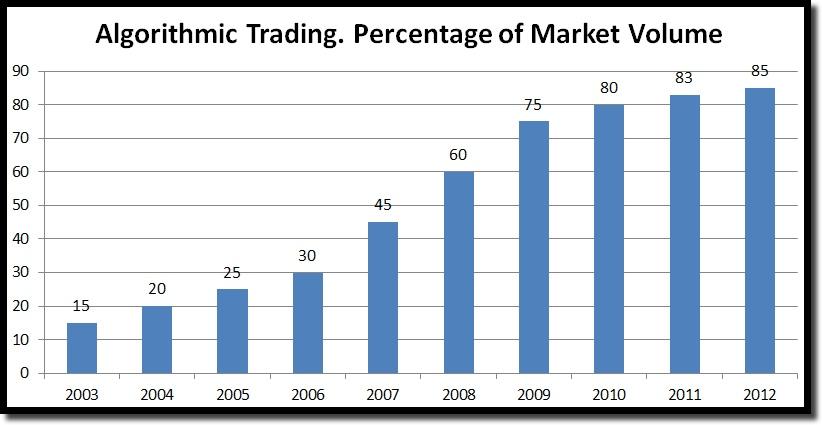Volume ratio stock market
Also known as the TRIN or Short-Term TRading INdex, the Arms Index is a breadth indicator developed by Richard W. The index is calculated by dividing the Advance-Decline Ratio by the Advance-Decline Volume Ratio. Because it acts as an oscillator, the indicator is often used to identify short-term overbought and oversold situations.
A moving average can also be applied to smooth the data series. The terms Arms Index and TRIN are used interchangeably in this article.
As a ratio of two indicators, the Arms Index reflects the relationship between the AD Ratio and the AD Volume Ratio. The TRIN is below 1 when the AD Volume Ratio is greater than the AD Ratio and above 1 when the AD Volume Ratio is less than the AD Ratio.
Low readings, below 1, show relative strength in the AD Volume Ratio. High readings, above 1, show relative weakness in the AD Volume Ratio. In general, strong market advances are accompanied by relatively low TRIN readings because up-volume overwhelms down-volume to produce a relative high AD Volume Ratio. A strong up day in the market usually pushes the Arms Index lower, while a strong down day often pushes the Arms Index higher.
Just a moment
As you can see in the calculation above and in the corresponding chart below, the AD Volume Ratio surged to 7.
This produced a TRIN value well below 1.

Similarly, strong declines are usually accompanied by relatively high TRIN readings because down-volume swamps up-volume. In the example above, the AD Volume Ratio plunged to. This produced a TRIN value well above 1 3. Extreme readings in the AD Volume Ratio usually produce extreme TRIN readings. The Arms Index can be displayed with a semo-log scale or an arithmetic scale. Log scaling shows an equal distance for equal percentage movements. Arithmetic scaling shows an equal distance for each unit on the scale.
Volume Ratio of Advancing to Declining stocks
On a log scale, a move from. This is reflected with the dotted blue lines on the chart below. On an arithmetic scale, a move from. The log scale evens out the fluctuations of the Arms Index. Notice how spikes above 2 on the arithmetic scale look out of proportion relative to the overall fluctuations.
Current Market Statistics
The data itself is not different, just presented differently. There is no right or wrong answer when it comes to scaling. The choice depends on individual preferences.
Overbought and oversold levels for the Arms Index depend on the historical range and the smoothing if any. Surges above 3 are deemed oversold and dips below. The NY Composite is in a larger uptrend because it is above its rising day moving average. As such, oversold levels are preferred in order to generate bullish signals in the direction of the bigger uptrend.
ROLE OF VOLUME & OPEN INTEREST IN STOCK MARKET/COMMODITY MCXThe green dotted lines show oversold levels in early September, early October, early November and early December, pretty much one per month. Notice that the range is narrower with oversold above 1.

With the Nasdaq above its rising day moving average, oversold signals are preferred to trade in line with the bigger trend. There were oversold readings in June, August, September and October.
Volume (finance) - Wikipedia
The Arms Index is a volatile breadth indicator that can be used to generate overbought and oversold signals.
Even though it generates plenty of signals, it is preferable to trade in the direction of the underlying trend.

Short-term traders can use the unmodified Arms Index to generate short-term signals or a day SMA can be applied to generate more medium-term signals. The Arms Index is just one indicator and chartists should employ other aspects of technical analysis to confirm or refute signals generated.
Chartist preferring a log scale, as in the example below, should start with the Arms Index as the main symbol. Chartists can also add horizontal lines to define overbought and oversold levels.
Add horizontal lines as individual overlays to differentiate the colors and line styles. Users can also add multiple horizontal lines by entered comma separated values in the parameters box.
Click here for a live chart with the Arms Index. Market data provided by: Commodity and historical index data provided by: Unless otherwise indicated, all data is delayed by 20 minutes. The information provided by StockCharts. Trading and investing in financial markets involves risk. You are responsible for your own investment decisions. Log In Sign Up Help. Free Charts ChartSchool Blogs Webinars Members. Table of Contents Arms Index. Sign up for our FREE twice-monthly ChartWatchers Newsletter!
Blogs Art's Charts ChartWatchers DecisionPoint Don't Ignore This Chart The Canadian Technician The Traders Journal Trading Places. More Resources FAQ Support Center Webinars The StockCharts Store Members Site Map.
Terms of Service Privacy Statement.